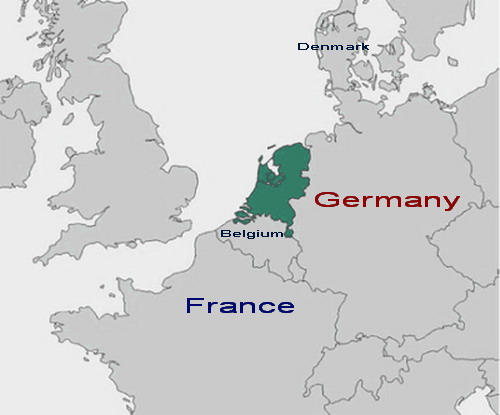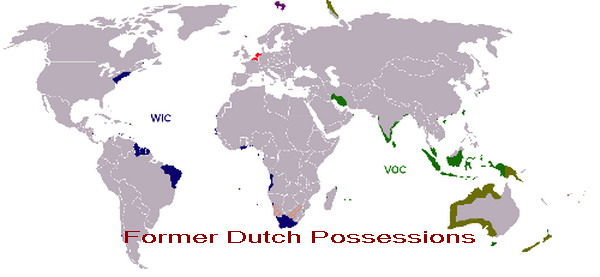by Yair Davidiy
The Tribe of Zebulon was Dominant in the Netherlands
as proven by Biblical and Secular Sources
[Posted to this site: 4 December, 2013, 1 Tevet, 5774]
|
Contents: 1. Introduction and an Anecdote Concerning Zebulon Also Being Found Amongst Tunisian Jews. 2. Zebulon and Sea-Faring. The Ship as a Symbol of Zebulon. 3. Zebulon to Dwell on the Sea-Shores. 4. Holland may also be recalled in the Book of Obadiah. 5. The SABALINGOI were in Frisia to the North of Holland and their name means "People of ZEBULON"!! 6. Ethnic Movements. 7. Frisian-Legends Affirm Their Israelite Origins! 8. THE SONS OF ZEBULON. 9. The Diamond Symbol of Zebulon and South Africa. 10. Conclusion. Israelites from the Lost Ten Tribes settled in the west. This included the Netherlands region. Descendants of the Tribe of Zebulon became dominant amongst the Dutch People. The ship symbol of Zebulon was that of the Netherlands. Prophecies and descriptions concerning Zebulon were fulfilled through in habitants of the Netherlands and only through them. Duration: 18.01 minutes. To Read article please scroll down.
|
Scroll Down
| Site Contents by Subject |
Home Research Revelation Reconciliation |
|
Publications |
Site Map Contents in Alphabetical Order |
This Site |
|
Article adapted from chapter 14 of our work, "The Tribes"
1. Introduction and an Anecdote Concerning Zebulon Also Being Found Amongst Tunisian Jews
The article below identifies the Tribe of Zebulon primarily with groups that settled in the Netherlands. They were part of the Ten Tribes of Israel who had been exiled by the Assyrians and lost consciousness of their ancestry. Nevertheless, they retained (like the other Tribes) something of their ethnic cohesion. Elements from Zebulon may be found elsewhere amongst Peoples in the West. In addition, there existed a tradition that descendants of Zebulon were to be found amongst the Jews of Tunisia. The author was informed that as many as 15% of the Jews of Tunisia had a tradition that they descended from Zebulon. The person who gave us this information (also to be found in Jewish Literature on the subject) was himself of Jewish Tunisian origin. Interestingly enough, his physical appearance was more characteristically "Dutch" than North African or even "Jewish". [Tall, golden-haired, and large of body; he even had personality quirks also found amongst the Dutch! Why has no-body else noticed this yet?] Such types are not uncommon amongst Tunisian Jews. It will be noted that when the Ten Tribes were exiled a few escaped and atttached themselves to Judah in the south. This probably explains the presence of a minority of Zebulon amongst the Jews as well as being found with the Lost Ten Tribes in the west.
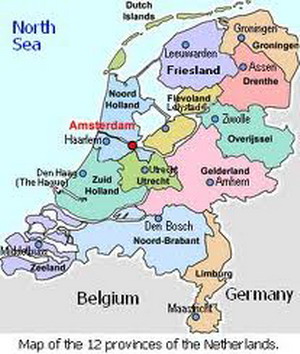
The Tribe of Zebulon
"AND THE SONS OF ZEBULON; SERED, AND ELON, AND JAHLEEL" [Genesis 46:14].
Zebulon is identifiable with the Netherlands.

2. Zebulon and Sea-Faring. The Ship as a Symbol of Zebulon.
The symbol of Holland was a ship in popular tradition and a ship was the symbol of the former Dutch Republic. A ship was also the symbol of Zebulon according to the Midrash (Numbers Rabah 2;5). In Jewish Synagogues one often finds the different symbols of Israelite Tribes depicted on the walls or on the curtain or door of the Ark containing the Torah Scrolls. Zebulon is nearly always depicted by a ship. Soo, a series of Israeli Stamps with the Tribal Symbols shows a ship as the symbol of Zebulon.
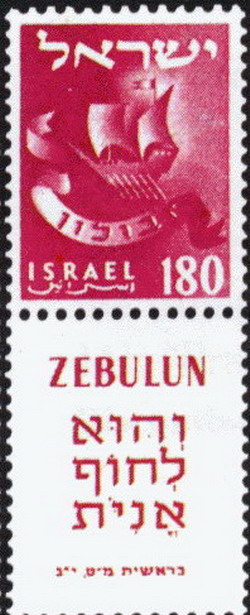
Israeli Stamp Showing Ship Symbol of Zebulon

Coat of Arms of the original seven provinces of the Netherlands (1579) depicts a sailing ship with a Bible on its prow.
Source: “Strange Parallel. Zebulon – The Netherlands, A Tribe of Israel” by Helene Koppejan, 1984, UK.

Coat of Arms of the Netherlands

Reclaimed Lands from the Sea i.e. Sea-Shores
3. Zebulon to Dwell on the Sea-Shores
Zebulon, in Talmudic Literature, is pictured as a merchant seafarer, which description fits the Dutch.
Genesis 49:
13 ‘Zebulun shall settle at the shore of the sea;
he shall be a haven for ships,
and his border shall be at Sidon.
In Hebrew this may be translated as saying,
Zebulon will dwell on the shores of the sea;
And He shall be a shore [or haven] for ships...
The Dutch were amongst the foremost sea-goers of the world from the 1500s up till the present.
The Dutch Empire was spread all over the world. At one stage it included areas in North America.
New York was founded by the Dutch. Peter Stuyvesant was a Dutch governor of New Amsterdam.
The Dutch rule over Ceylon, ports in India, places in South America and Indonesia, etc.
Dutch ports were also very important.
Rotterdam for a long time was the largest and busiest port in the world.
Rotterdam still serves as the major port for all of Europe.
Moses blessed Zebulon: that he should "Suck of the abundance of the seas and of treasures hid in the sands" (Deuteronomy 33:19). Today both South Africa and Holland are on the seashores and a good portion of the earlier diamond wealth of South Africa was found in the "sands".
Only the Dutch dwell "on the shores of the Sea" since the Dutch descend from Zebulon!!
Jacob prophesied "Zebulon shall dwell at the haven of the sea and he shall be for an haven of ships; and his border shall be unto Sidon" (Genesis 49:13). Sidon (or "Zidon"), at one stage, was conquered by the "Sakkara" who were named after the Tribe of Issachar but whose forces in this case probably comprised or at least included Zebulonites. In the Bible Issachar and Zebulon were usually mentioned together. Issachar and Zebulon were together with Judah when they encamped in the wilderness around the Tabernacle.
ZEBULON SHALL DWELL AT THE HAVEN OF THE SEA AND HE SHALL BE FOR AN HAVEN OF SHIPS (Genesis 49:13). The expression, "dwell at the haven of the sea" according to the HEBREW original ("be-Hof-yamim") may be preferably translated as "dwell on the SHORES of the Sea". The only nation in the world whose population is known for dwelling extensively on reclaimed sea-land, literally, "On the shores of the sea", is Holland. This description applies in some way or other to up to two-thirds of the Dutch people.
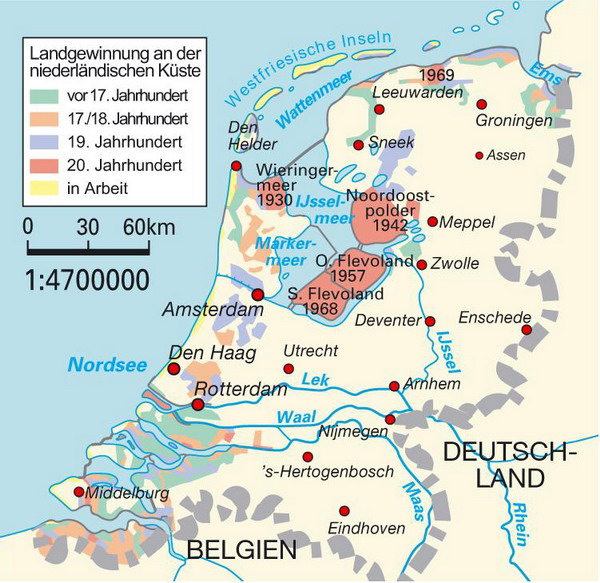
Reclaimed Lands from the Sea i.e. Sea-Shores
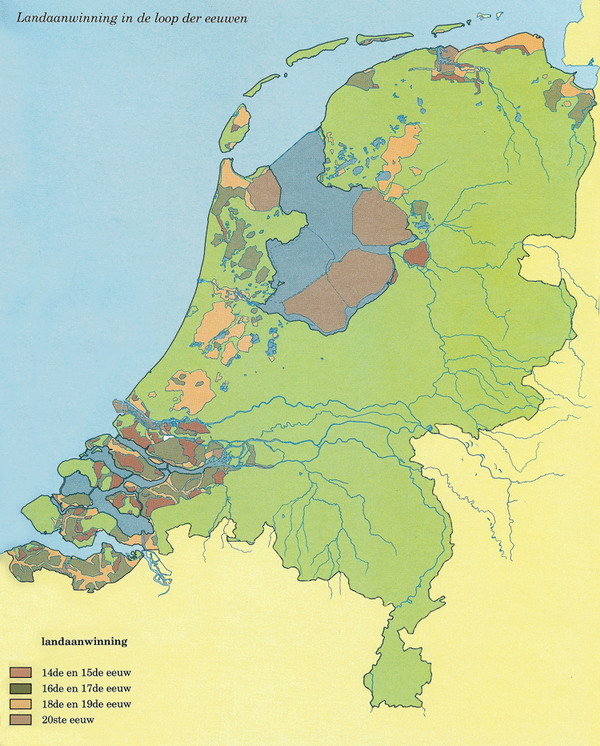
Reclaimed Lands from the Sea i.e. Sea-Shores

4. Holland may also be recalled in the Book of Obadiah
AND THE CAPTIVITY OF THIS HOST OF THE CHILDREN OF ISRAEL SHALL POSSESS THAT OF THE CANAANITES, EVEN UNTO ZAREPHATH (Obadiah 1:20).
Rabbinical Commentators (Rashi, Nachmanides, Iben Ezra, Daat Sofrim, Abarbanel) understood "Zarephath" to mean Britain and France and the area to the north of it apparently including Holland. In the light of these explanations the verse should be understood to say:
AND THIS FIRST CAPTIVITY OF THE TEN TRIBES SHALL POSSESS THE REGION FROM THE CANAANITES OF GERMANY AND INCLUDING BRITAIN AND FRANCE AND THE NORTH.
According to the Geneva Bible (1599) of Calvin:
"By the Canaanites, the Jews mean the Dutchmen, and by Zarephath, France".
In Roman Times maps of the Netherlands area show the Batavi of Southern Holland alongside the Cananefates. The name Cananefate can be interpreted to mean "Union of Canaanites". The Land of Israel in the Bible is usually referred to as the "Land of Canaan".
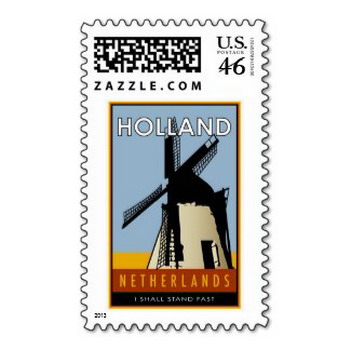

5. The SABALINGOI were in Frisia to the North of Holland and their name means "People of ZEBULON"!!!
The name of ZEBULON is also found in the Sabalingoi recalled by Ptolemy in South Jutland (Denmark) and Northern Frisia. “SABALINGOI” in Hebrew means "People (Goi) - of - ZEBULON". In Northern dialects "Sabalin" and Zebulon would have been alternate pronunciations of the same name: The "Z" was replaced by "S"; and "goi" means people in Hebrew. The Sabalingoi were to the north of the Sigulones (whose name in Hebrew means "Chosen Ones") and of the Saxons. To the north of the Sabalingoi were the Chali descendants of Jahleel [Yachliayl in Hebrew, and the "Ya" would have been dropped] (Genesis 46; 14). Jahleel was a son of Zebulon as was Sered and also Elon. From Jutland and Scandinavia there were several waves of migration into the area of nearby Netherlands especially into Frisia. The Sabalingoi and Chali were in the Netherlands' region, or they moved to it. Ptolemy may in fact be interpreted as placing the Sabalingoi in Northern Frisia and thus in the Netherlands or just on its borders.

6. Ethnic Movements
Pytheas (ca. 325 BCE) is reported as describing the Netherlands region as peopled by Skuthai (i.e. Scythians) meaning it is believed Frisians who, in the 300's and 200's BCE, began to absorb the native speakers of Celtic tongues. There followed several centuries in which the population fluctuated greatly. In about 200 CE the Franks invaded. Angles, Saxons, and Jutes from Jutland overran the land in 450-500 CE. Consequently, Frisians, together with others, participated in the Anglo-Saxon invasions. After ca.600 CE Frankish influence re-asserted itself. Roughly speaking, modern Holland has Frisians in the north, Saxons in the east, and Franks in the south. These groupings should be considered more as different federations rather than homogeneous entities. On the whole newcomers came from the east. Some of the Tribal names and linguistic considerations indicate origins from Scandinavia and Scythia.
The Angles and Saxons before they, together with other northern peoples, invaded Britain in the 450s CE had sojourned (at least in part) for about 200 years in Holland especially in Frisia. Some of the Jutes had also been in Frisia. The Byzantine historian, Procopius (Gothic War vii; 20) said that the Frisians were an important element amongst the invaders of Britain.
The name of the Frisians is traceable to Peres son of Gilead of Manasseh but the actual inhabitants of present-day Frisia and Holland are identifiable on the whole more with Zebulon.
In Genetic terms the Dutch may be considered as closest to the people of Southwest England and Denmark.
The Netherlands also received important continents of French Huguenots, Sephardic and Ashkenazic Jews, Malays, Arabs, and Eurasians of mixed blood. In other words, the population is of mixed origins like the populations of most countries. This does not contradict the fact that a good proportion of the people (if not most) are (or were until recently) descended from Israel or that amongst the Israelites a certain tribe has the ascendancy. Enough has been shown to prove that often groups of divergent backgrounds converging on one spot, are revealed as having originally the same tribal identity.
A Wikipedia article on the Demographics of the Netherlands relates that ca. 80% of the population are Dutch. The rest are immigrants from sundry third world countries. Half of the immigrants are from urkey and Morrocco. The immigrant birth rate is much higher than that of the native Dutch.
|
1. Introduction and an Anecdote Concerning Zebulon Also Being Found Amongst Tunisian Jews The article below identifies the Tribe of Zebulon primarily with groups that settled in the Netherlands. They were part of the Ten Tribes of Israel who had been exiled by the Assyrians and lost consciousness of their ancestry. Nevertheless, they retained (like the other Tribes) something of their ethnic cohesion. Elements from Zebulon may be found elsewhere amongst Peoples in the West. In addition, there existed a tradition that descendants of Zebulon were to be found amongst the Jews of Tunisia. The author was informed that as many as 15% of the Jews of Tunisia had a tradition that they descended from Zebulon. The person who gave us this information (also to be found in Jewish Literature on the subject) was himself of Jewish Tunisian origin. Interestingly enough, his physical appearance was more characteristically "Dutch" than North African or even "Jewish". [Tall, golden-haired, and large of body; he even had personality quirks also found amongst the Dutch! Why has no-body else noticed this yet?] Such types are not uncommon amongst Tunisian Jews. It will be noted that when the Ten Tribes were exiled a few escaped and atttached themselves to Judah in the south. This probably explains the presence of a minority of Zebulon amongst the Jews as well as being found with the Lost Ten Tribes in the west.
The symbol of Holland was a ship in popular tradition and a ship was the symbol of the former Dutch Republic. A ship was also the symbol of Zebulon according to the Midrash (Numbers Rabah 2;5). In Jewish Synagogues one often finds the different symbols of Israelite Tribes depicted on the walls or on the curtain or door of the Ark containing the Torah Scrolls. Zebulon is nearly always depicted by a ship. Soo, a series of Israeli Stamps with the Tribal Symbols shows a ship as the symbol of Zebulon.
3. Zebulon to Dwell on the Sea-Shores
Genesis 49: Only the Dutch dwell "on the shores of the Sea" since the Dutch descend from Zebulon!! Jacob prophesied "Zebulon shall dwell at the haven of the sea and he shall be for an haven of ships; and his border shall be unto Sidon" (Genesis 49:13). Sidon (or "Zidon"), at one stage, was conquered by the "Sakkara" who were named after the Tribe of Issachar but whose forces in this case probably comprised or at least included Zebulonites. In the Bible Issachar and Zebulon were usually mentioned together. Issachar and Zebulon were together with Judah when they encamped in the wilderness around the Tabernacle. ZEBULON SHALL DWELL AT THE HAVEN OF THE SEA AND HE SHALL BE FOR AN HAVEN OF SHIPS (Genesis 49:13). The expression, "dwell at the haven of the sea" according to the HEBREW original ("be-Hof-yamim") may be preferably translated as "dwell on the SHORES of the Sea". The only nation in the world whose population is known for dwelling extensively on reclaimed sea-land, literally, "On the shores of the sea", is Holland. This description applies in some way or other to up to two-thirds of the Dutch people.
4. Holland may also be recalled in the Book of Obadiah AND THE CAPTIVITY OF THIS HOST OF THE CHILDREN OF ISRAEL SHALL POSSESS THAT OF THE CANAANITES, EVEN UNTO ZAREPHATH (Obadiah 1:20). Rabbinical Commentators (Rashi, Nachmanides, Iben Ezra, Daat Sofrim, Abarbanel) understood "Zarephath" to mean Britain and France and the area to the north of it apparently including Holland. In the light of these explanations the verse should be understood to say: AND THIS FIRST CAPTIVITY OF THE TEN TRIBES SHALL POSSESS THE REGION FROM THE CANAANITES OF GERMANY AND INCLUDING BRITAIN AND FRANCE AND THE NORTH. According to the Geneva Bible (1599) of Calvin: "By the Canaanites, the Jews mean the Dutchmen, and by Zarephath, France". In Roman Times maps of the Netherlands area show the Batavi of Southern Holland alongside the Cananefates. The name Cananefate can be interpreted to mean "Union of Canaanites". The Land of Israel in the Bible is usually referred to as the "Land of Canaan".
5. The SABALINGOI were in Frisia to the North of Holland and their name means "People of ZEBULON"!!! The name of ZEBULON is also found in the Sabalingoi recalled by Ptolemy in South Jutland (Denmark) and Northern Frisia. “SABALINGOI” in Hebrew means "People (Goi) - of - ZEBULON". In Northern dialects "Sabalin" and Zebulon would have been alternate pronunciations of the same name: The "Z" was replaced by "S"; and "goi" means people in Hebrew. The Sabalingoi were to the north of the Sigulones (whose name in Hebrew means "Chosen Ones") and of the Saxons. To the north of the Sabalingoi were the Chali descendants of Jahleel [Yachliayl in Hebrew, and the "Ya" would have been dropped] (Genesis 46; 14). Jahleel was a son of Zebulon as was Sered and also Elon. From Jutland and Scandinavia there were several waves of migration into the area of nearby Netherlands especially into Frisia. The Sabalingoi and Chali were in the Netherlands' region, or they moved to it. Ptolemy may in fact be interpreted as placing the Sabalingoi in Northern Frisia and thus in the Netherlands or just on its borders. 6. Ethnic Movements Pytheas (ca. 325 BCE) is reported as describing the Netherlands region as peopled by Skuthai (i.e. Scythians) meaning it is believed Frisians who, in the 300's and 200's BCE, began to absorb the native speakers of Celtic tongues. There followed several centuries in which the population fluctuated greatly. In about 200 CE the Franks invaded. Angles, Saxons, and Jutes from Jutland overran the land in 450-500 CE. Consequently, Frisians, together with others, participated in the Anglo-Saxon invasions. After ca.600 CE Frankish influence re-asserted itself. Roughly speaking, modern Holland has Frisians in the north, Saxons in the east, and Franks in the south. These groupings should be considered more as different federations rather than homogeneous entities. On the whole newcomers came from the east. Some of the Tribal names and linguistic considerations indicate origins from Scandinavia and Scythia. The Angles and Saxons before they, together with other northern peoples, invaded Britain in the 450s CE had sojourned (at least in part) for about 200 years in Holland especially in Frisia. Some of the Jutes had also been in Frisia. The Byzantine historian, Procopius (Gothic War vii; 20) said that the Frisians were an important element amongst the invaders of Britain. The name of the Frisians is traceable to Peres son of Gilead of Manasseh but the actual inhabitants of present-day Frisia and Holland are identifiable on the whole more with Zebulon.
In Genetic terms the Dutch may be considered as closest to the people of Southwest England and Denmark. The Netherlands also received important continents of French Huguenots, Sephardic and Ashkenazic Jews, Malays, Arabs, and Eurasians of mixed blood. In other words, the population is of mixed origins like the populations of most countries. This does not contradict the fact that a good proportion of the people (if not most) are (or were until recently) descended from Israel or that amongst the Israelites a certain tribe has the ascendancy. Enough has been shown to prove that often groups of divergent backgrounds converging on one spot, are revealed as having originally the same tribal identity. A Wikipedia article on the Demographics of the Netherlands relates that ca. 80% of the population are Dutch. The rest are immigrants from sundry third world countries. Half of the immigrants are from urkey and Morrocco. The immigrant birth rate is much higher than that of the native Dutch. | |||||||||||||
|
7. Frisian-Legends Affirm Their Israelite Origins!
According to Frisian-legends a certain King Adel was a descendant of Shem. King Adel reigned in India which from the context meant somewhere in Central Asia to the east of the Caspian Sea. This area was also known as Cush. King Adel had three sons: Friso, Bruno, and Saxo. The term "Cush" is sometimes translated as "Ethiopia", Genesis 2:13. The Prophets Zephaniah (3:10) and Isaiah (10:10) said that "Cush" was one of the places to which the exiled Israelites would go. In this section of Scythia east of the Caspian Sea, archaeologists have found the ruins of an extensive civilization whose inhabitants spoke Aramaic. Some of the Israelite Tribes had spoken Aramaic even before their exile, as shown by archaeological findings.Aramaic was used as an official tongue in the Assyrian Empire and is believed to have been the most commonly-used one. Phillip Lozinski (1953) believed that from this region east of the Caspian came the "Barbarian" peoples whom he suggests may have been at least partly Semitic. This is consisted with them having descended from Israel. They invaded Europe beginning from around the 200s CE. Additional evidence exists showing that the invaders must have come from Scythia and the region east of the Caspian. These invasions and migratory movements were often connected with activities of the Huns who themselves were a mixture of various peoples. The Huns from this vicinity caused other nations to flee westward. N.C. LUKMAN ("Skoldung und Skilfinge. Hunnen und Herulerkonige in Oostorlischer Uberliersering," Copenhagen 1943) showed how in Nordic Mythology the name Adel (meaning "Noble") was often used as a euphemism for Attila the Hun and for the Huns in general. In the Frisian legends King Adel was the father of Friso, Bruno, and Saxo. Scientific Linguists have concluded that the Northern "Barbarians" who entered Europe had the later European aspects of their languages imposed upon them by an external force. They originally spoke both Hebrew and Aramaic. The work of Terry Blodgett (from Salt Lake City) is important in this regard. The legends speak of these three brothers being descended from Shem and having been in Jerusalem at the time of its destruction by the Babylonians: "In the time of the destruction of Jerusalem by Nebuchadnessar (586 B.C.), 3 brothers - Friso, Bruno, and Saxo with [their] wives, children, and relatives fled out of the country, encouraged to do so by announcements of the Prophets concerning the fall of the town". In this legend Bruno represents the Angles who according to Ptolemy had at one stage been centered on the region of Brunswick in Eastern Germany. The Angles had also had a center in Angeln to the south of Denmark or else they moved to Angeln prior to the invasion of England. By placing Friso, Bruno, and Saxo in Jerusalem (which became representative of all Israel) before its capture the legend in effect infers that the Frisians, Saxons, and Brunswickian-Angles were therefore originally Israelites or Jews. The legend about having been in Jerusalem may be taken as reflecting a tradition that the three brothers were related to the Jews which is consistent with their belonging to the Lost Ten Tribes who had been exiled from their own lands in Israel at least 140 years before the actual fall of Jerusalem. The legend contains the recognition that the three brothers had left the Land of Israel (identified as "Jerusalem" or the Land of the Jews) before Nebuchadnezzar of Babylon captured it. The northern Israelites had indeed been exiled prior to the Babylonian onslaught. The Lost Ten Tribes had been re-settled in Assyria and in lands ruled by Assyria. Another Frisian legend says that Albione and 32 sisters went from Assyria by ship and landed in England which they called Albion. After they landed, Brutus drove them out of the country and re-named it Britain in his own honor. The Albioni crossed the Sea and landed in Frisia where they intermixed with the Saxons and returned together with them to conquer the island. This legend may also serve as an indicator of Israelite origins since the exiled Israelites had indeed been re-settled in "Assyria" (or in Assyrian-controlled areas) before asserting their independence and moving elsewhere.
Zebulon was noticed in the Sabalingoi of Frisia; Yahleel in Chali of Jutland whence there were migrations to Frisia in the Netherlands. Sered, son of Zebulon, became the the Continental Suardones. These were considered, together with Angles, and Longbards, Varini, Eudoses, and others (Tacitus, Germania 40), as part of the Suebian confederation. At the end of the sixth century CE Venantius Fortunatus7 mentioned Suebi, together with Frissi in the Netherland's area, and these Suebi, according to Zeuss, belonged to the Suarine tribe. "Suarine" and "Suardone" (cf. Sered) are alternative appellations for the same group. We thus through the Suardones find descendants of Sered son of Zebulon in Holland. The Suardones had previously been registered as SUARDENI in Scythia between the Don and Volga Rivers surrounded by Sarmatae, Siraceni (Issachar), Assaei (Asher) and others. They re-emerge as the Suardenoi in Sweden and from there apparently moved to the Netherlands. These movements are in accordence with the Scythian and Scandinavian origins of many in the Netherlands.
9. The Diamond Symbol of Zebulon and South Africa Each Tribe of Israel had its own stone the Chief Priest's Breastplate. The Stone of Zebulon was a diamond (Exodus Rabah 38;5). Today, South Africa produces most of the world's diamonds which, on the whole, are processed and traded with in Antwerp Belgium in area of Flanders whose people are considered to be of Dutch affiliation -at least in part. Before Antwerp, Amsterdam in Holland was the main center for diamonds. South Africa where the diamonds come from is dominated by the Boers who are partially descended from Dutch settlers and whose language is based on an old Dutch dialect.
The Dutch people do literally dwell on the shores of the sea. # Today, approximately 27 percent of the Netherlands is actually below sea level. This area is home to over 60 percent of the country's population of 15.8 million people. #
There are other facts linking the Netherlands to Zebulon. These include the traditional occupations of Zebulon being parallel to those of the Dutch; the Netherlands being in the place that parallels Zebulon relating to the other Tribes in the Israelite Geographical Configuration of Tribal Encampment; Biblical Codes; and other matters some of which are discussed by Bert Otten in a separate article on this site. See Below. They are the only people who fit the description of Zebulon. Dutch ports serve as a haven (harboring-place) for ships more than those of nearly any other country!! Peoples who settled in Holland bore names recalling those of Zebulon and the sons of Zebulon. The Sabalingoi had a name meaning "People of Zebulon".
|
Zebulon. Tribal Characteristics in a Nutshell
See Also:
Holland in Brit-Am Bible Codes
especially,
3. Holland, Judah, Issachar, with Zebulon and the Sea
